
Pastrypastmidnight
-
Posts
300 -
Joined
-
Last visited
Content Type
Profiles
Forums
Store
Help Articles
Posts posted by Pastrypastmidnight
-
-
18 minutes ago, Rajala said:
I'm thinking, that I might be looking at this the wrong way. Maybe caramel is the wrong word. You know? I'm looking for a semi fluid product that's extremely fruity. I'm not interested in the caramel taste, but its texture.
You can up the amount of fruit purée and reduce the dairy (cream and butter). If you want a fruit-forward filling, yes, add everything but the butter at the beginning. Do not caramelize the sugar and deglaze. That would bring out the caramel flavor.
The nice thing is that with a bonbon filling you have so much room to play around because it doesn’t have to hold its shape, not stick to the cellophane, etc.
104C will give you a more liquid caramel, 107C will hold its shape better but still ooze. A more fibrous purée with hold it’s shape better than a liquid one, but I generally stay between those temperatures.
Does any of that help?
-
5 hours ago, pastrygirl said:
Here in WA they are extra strict about pasteurization of ice cream production so most shops use a pre-made base. But the previous tenant of my kitchen made scratch ice cream and was sharing with a craft soda maker and then me. (We had all met at a previous commissary that declined after a sale. Tried other kitchens then reunited). If you do make ice cream, be prepared to detail your pasteurization and cooling methods.
If you’re doing low volume or significant wholesale you might be better off with department of agriculture food producer licensing. Does your state have a cottage food act? A WSDA cottage food license is under $100, I do a little higher volume so my food producer license was about $150, vs $900 a year when I was licensed as a caterer by the county health dept. $800 makes a difference to a small biz! One of my tenants is licensed under cottage food due to size even though it’s a commercial kitchen , so that’s not only for home cooking.
Each company in a shared kitchen is licensed and inspected individually so unless you go with the gluten free space it shouldn’t matter what other tenants are doing. Licensing wise, that is. 🤪
Cottage food in my state is extremely limited. Can’t sell online or out of state, can’t accept payment online, very low threshold for sales, etc.
Thank you for all the input and information!
-
 1
1
-
-
On 7/17/2020 at 5:36 AM, JeanneCake said:
This is a great suggestion; and I would add that sometimes ice cream businesses are licensed differently/separately from other food businesses. Check the BoH page of the town you are looking at to see if this is the case. In our town, ice cream shops are limited to April-October operations - they can't be open from Nov 1 to March 30 (I don't know why). I mention it because even though the fees are likely to be different, the requirements for a different type of food business sharing ice cream shop space *might* require some additional stuff (again, not sure what, but you learn to expect the unexpected in life).
Yes, that is a concern. I tried to call my local department of environmental health to ask about licensing and if ice cream would need to be in a separate production space and did not get any answers. She basically told me I’d have to have the space first (built out) and then someone would inspect and determine if it met the requirements (insert eye roll). Thanks for the heads-up!
-
On 7/15/2020 at 9:16 AM, Metztli said:
A lot of kitchens aren't very compatible with chocolate work. Too hot, humid, and too many ambient food odors like garlic, onions, etc. I'd inquire with local ice cream shops. I know someone who was able to start out sharing a space with a small ice cream business. Where I live, this is an ideal situation since chocolate season starts ramping up when ice cream season winds down.
This is my exact concern. I hadn’t thought about an ice cream kitchen. Mostly because my plan for a retail space was to do chocolate and ice cream to off-set each other. I’ll think about this suggestion some more. Thank you!
-
On 7/14/2020 at 8:43 PM, MokaPot said:
You could do a public records search of the people you intend to contract (lease) with, including the landlord. If they've been overly-involved in landlord-tenant issues, TROs, etc., I'd think twice about them.
Smart! Thank you!
-
On 7/14/2020 at 6:53 PM, pastrygirl said:
As Jeanne said, much depends on the kitchen itself and who else is in it.
Commissaries can be too much of a free-for all, see if they have set stations and set schedules or if anyone can come in and crank up all the ovens and a big pot of stock at any time. Refrigeration is a big concern, you probably don't want to share a walk-in cooler with someone else's salami, kimchi, gorgonzola, roasted garlic, etc.
I have my own kitchen now and I love it but it's still not perfect. No AC and a west window means it sucks in the summer, I made a few chocolate bars the other day by putting them directly into the fridge at every stage but chocolate production season is otherwise over until September. I have two tenants, a baker and a personal chef. Since there are only 3 of us it's not too hard to coordinate who needs the oven but it's really best when only 2 of us are there at a time.
Thank you! There is an culinary incubator in the next town over and that’s where everyone is suggesting I go, and you can schedule your times to work. But I’m in one of the bbq capitals of the country and it’s a pretty open space. I just worry about the heat and the smells. There is one gluten-free space that’s closed off (I’d have to make sure I’m not using gluten in any of my products) and might work a bit better. I’m just so used to being able to semi-control the temperature, leave things to crystallize, go grab something if I forget it. The logistics of a space where I cart stuff in and out all the time feels daunting.
-
On 7/14/2020 at 5:01 PM, JeanneCake said:
I shared kitchen space for the first 15 years I was in business, specializing in cake/cupcake/desserts (no bread, no breakfast pastries, no confections). A lot of what works and what doesn't depends on the type of kitchen you are sharing with (a coffee shop or restaurant has different "cycles" or rhythm than a catering operation or a corporate cafeteria kitchen that serves an office building and these are all different to a church kitchen, for example).
Who you approach will differ in terms of what they are willing to do. In a time of Covid, places may be more amenable to sharing a kitchen because now you're sharing the expenses (such as utilities, pest control, trash removal) but then they have to make room for you - to store your ingredients, equipment, paper goods. You also have to know whether the powers that be (Board of Health, Select Board, the bureaucrats) will allow two food businesses to share a single kitchen (in my years of looking for space to share, I encountered one city that would not allow two businesses to share kitchen space; I found a caterer who had two other businesses sharing their small kitchen and it was utter chaos - I walked away from that).
Figure out what kind of space you need to work in (how much table space, refrigeration space, storage space) so you don't waste your time or someone else's while you search. Maybe go with a limited product line for a year. Do not expect a long term relationship; if it works, it will play itself out like that. Tell prospects you already have business insurance, your ServSafe and Allergy certs and this will alleviate any fears they may have. And for those who might be trying to get around the rules, it shows you are serious about your own business. One place I talked ten years ago was going to have me work in an area that was *carpeted* (!) and charge me $1500/month - because I was going to be using the equivalent of 25 sf of space in his cooler and his cooler was on 24/7 (it would have been, regardless of whether he was renting space or not!)
There are more opportunities these days in the form of incubator kitchens (which are expensive to rent by the hour) other kitchens designed to help launch food businesses and on social media to advertise that you are looking for space to share, or for someone to share your space; so leave no stone unturned. Ask your local BoH or kitchen supply store if they know of anyone who wants help with their rent or mortgage; ask at church kitchens (there is a church in my town that has a spectacularly outfitted commercial kitchen because they put on a 3 day food festival that draws hundreds and for that week, it is worth it for them to have such an amazing kitchen. While they were interested in sharing it, the town wouldn't allow it

Good luck!
Thank you so much for your thoughts and advice! I’m sorry, I didn’t mean to post and then just disappear. I really appreciate you taking the time—so many good and important things to consider!
-
Is it really possible to run a chocolate business out of a shared kitchen space? I’d love to hear your experiences (good and bad). What were the challenges? What helped things to work? Size? Who do/did you share with? What products do/did you offer?
We were all ready to have contractors come out and bid on a production/retail location and then COVID hit and the world changed. Trying to brainstorm how to continue moving forward.
-
Just now, jimb0 said:
Ahahahahahahah
I got a text from my neighbour a couple of weeks ago asking me if i wanted any discard because they've jumped onto the wagon.
I got my current starter from a friend a month or two ago. When I was pregnant with my last baby I developed a weird aversion to my starter. I couldn’t even look at it or think about it without throwing up. Then I could never face the prospect of a freezer full of waffles to start my own from scratch again. But quarantine... so I jumped back on the horse, but started with a well-developed micro starter this time.
-
 1
1
-
-
2 minutes ago, jimb0 said:
Starter waste has been one of my biggest cooking pet peeves, haha. i'm glad people are starting to realize how unnecessary it is; small amounts still have millions of microbial cells.
These are lovely. What was the overall rough hydration level of your dough?
Between about 76 and 78% on these, I think. I wet my hands a lot with mixing and folding, so with a smaller amount of dough it affects the hydration.
And I agree about the waste. When I started my first starter about 6 or 7 years ago I just couldn’t throw anything away for the first month or two. It hurt too much. I think I probably had over 100 sourdough waffles and around 50 soft pretzels in my garage freezer at one point in time and then my family was like, “Stop, Mom, please. We can’t take any more.” This is so much more manageable. I’ve actually had to build up my discard on purpose to be able to make things with it.
-
I’ve been feeding 3 times a day and keeping a very small starter, as recommended by @fullproofbaking on IG. She has a bunch of tutorials on YouTube and IG.
My approximate and often flexible schedule:I feed 5g of starter 10g flour (bread/ww mix) and 10g water at 7:00 a.m. (1:2:2)
2:00 p.m. discard all but 5g and feed 10g flour mix, 10g water. (1:2:2)
9:00 p.m. feed 5g starter 25g flour mix, 25g water. (1:5:5)The morning I want to mix dough I feed 15g starter with 30g flour mix and 30g water and use that in the bread mix for a ~650g loaf about 5 hours later and have just enough left over for my mid-day feed.
6 years ago I kept a 67% stiffer starter and did 1 part starter, 2 parts water, 3 parts flour and fed twice a day. I liked that I had to knead to mix it—i could be sure everything was well incorporated, and it was more dramatic when it rose. But more recipes are written for a liquid starter and I got tired of doing the math 😂.
But I’m really liking this micro starter. It’s very sweet and so much less waste. I just throw the spoonful of discard in the freezer and hold on to it until I have enough to make pancakes or waffles.
These loaves were baked on that schedule with different amount of bulk fermentation (almost 5 hours, 6.5 hours, 8 hours). They all turned out pretty well.-
 3
3
-
-
On 5/1/2020 at 12:12 PM, TexasMBA02 said:
@gfron1, that is good to know. I'm glad I'm not the only one. After studying that book a decent amount, there seem to be some inconsistencies that are a bit perplexing.
@Pastrypastmidnight & @keychris, I wonder if part of the difference is application. My sense is as you mature the macarons in the fridge a day or two, the filling tends to soften the shells and meld a bit. Presumably then, the opposite is happening as moisture is wicked out of the filling it should firm up a bit. I tried his recipe for pistachio ganache and it is a 1:1 ratio (with some pistachio paste) and it set up pretty nicely once the macarons had matured in the fridge.
For further R&D, I will probably continue to push the ratio higher because one thing that is true is that as I'm filling them, it is pretty loose and so keeping them aesthetically pleasing is more challenging.
Thanks again for all the help.
You may be right! One thing I’ve done with soft fillings is freeze the macs upright right after filling, then turn them on their sides for storage in the fridge after they’re frozen. Because, as you said, the shells draw moisture out of the filling, and I find that once I bring them out of the fridge they are nice and sturdy.
-
Even a 1:1 ratio of white chocolate to cream seems like it would be veeeeery fluid and unlikely to set up to me. I’ve seen recipes go as high as 4:1 white chocolate to cream for macarons.
As far as the dark recipe, a change from 68% to 70% shouldn’t make a huge difference. I’d give it a try and if you find it too firm, just add a smidge more cream the next time.
-
I really like Solstice and Amano. They’re both US companies, out of Utah actually. Maison Marou out of Vietnam is really yummy too.
-
 1
1
-
-
On 4/11/2020 at 7:47 AM, pjm333 said:
Share a recipe for the Cinnamon Crunch bagels ? Thanks !
The recipe I used was a bit of a disaster and I don’t want to throw anyone under the bus publicly. I’ll message you the recipe and my thoughts.
-
-
3 minutes ago, jedovaty said:
Holy crap.
I'll have you know, I almost clicked "report post" 😝
😂😂😂
-
Honestly, what haven’t been baking? Here’s about half of it.
All the cakes:
Chocolate cake, raspberry compote, hazelnut daquoise, praliné buttercream, dark chocolate buttercream, raspberry chocolate macarons, hazelnut dragées and brittleDevil’s Food cake, peanut butter buttercream, sponge toffee bits, homemade pb cups, chocolate ganache, chopped chocolate and peanuts
Grapefruit cardamom chiffon cake, grapefruit glaze, candied zest and segments
Salted Caramel and Chocolate Gateau St. Honoré
And all the bread and pastry:
Kouign-Amann

No-knead bread
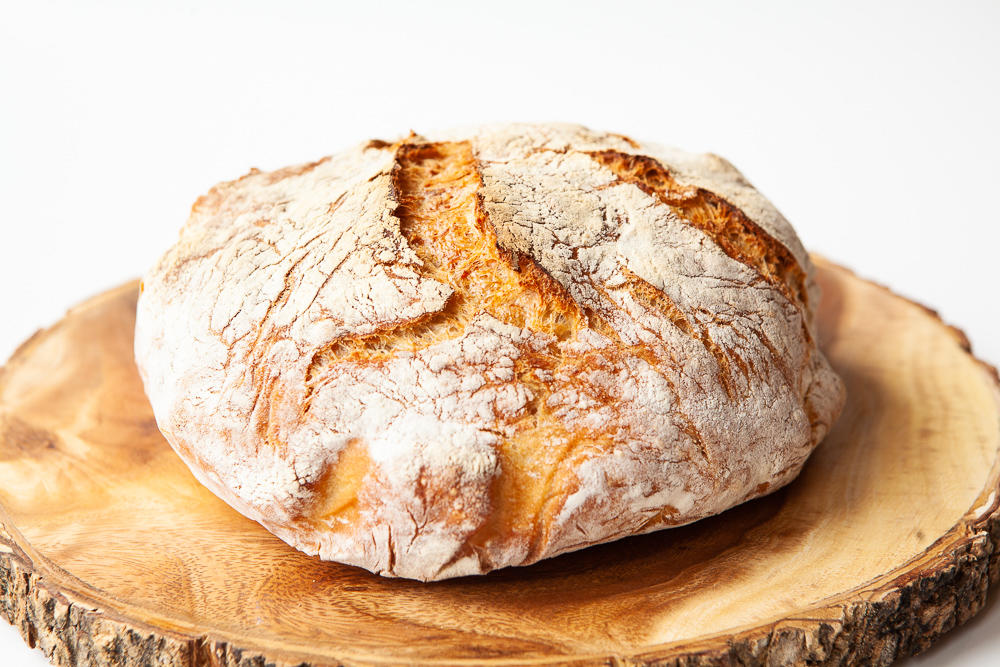
Every conceivable braid style of challah
Garlic Naan
Asiago Bagels
Croissants
My belly and freezer are full

-
 12
12
-
 8
8
-
-
7 hours ago, teonzo said:
Seems like you are using the wrong flour, the gluten is not developing enough during the proofing. Or the flour has low gluten content, or it has strong gluten (wrong P/L, not enough extensible).
This is because the butter got too hard. You need to store it in the warmer part of your fridge. The resting time depends on the temperature of your fridge: you want the gluten to relax, but you also want to avoid the butter to get hard. You don't have to follow the exact resting times, you need to check the dough pliability. Start checking after 10 minutes, then after each 5 minutes. When the dough is back to the right pliability (not too soft, not too hard) then you need to proceed with the next turn, even if the resting time was half the amount suggested by the recipe, the one in command is the dough not the clock.
When the butter gets hard then it's hard to avoid troubles. You need it to warm a bit and get back to be pliable. If you let the dough rest at room temperature then the outer sides will come back to the right pliability, while the inner parts will become too soft, causing the "toothpaste effect". If the dough starts tearing and you put it back in the fridge, then you only worsen the situation because the outer sides will become harder. This why your first goal is to avoid the butter getting hard, simply because fixing that trouble could be impossible. You just need to get a feel for when the dough is ready for the next turn, trusting your sense of touch and not your clock/timer.
It's better to go for a longer proofing time at room temperature, than going too high. You need to be careful about humidity too, you don't want dry air otherwise the dough will form a crust, but you want to avoid too much humidity. One cup is more than enough, you just need to raise a bit the humidity inside the oven.
This is because the dough was too cold, so the butter was hard. You need to let it warm a bit, until it becomes pliable again.
Teo
Thank you for all the input! Today’s attempt went better despite it being the batch I broke the butter on during the first turn. I did two book folds instead of 3 standard folds and I maintained a more consistent proofing temperature. I let them proof longer as well.
Not perfect, and I can see the errors in the lamination, but I think I’m moving in the right direction.
I appreciate all the help!
-
 5
5
-
 1
1
-
 2
2
-
-
22 hours ago, Pete Fred said:
Thank you—that’s perfect!
-
On 6/29/2019 at 5:00 PM, Luke said:
I follow the instructions here: https://www.weekendbakery.com/posts/classic-french-croissant-recipe/
and agree you cant really measure you're success after the first attempt. Try a few times to eliminate variability. But I have had good success with these instructions.
Luke
So I finally tried croissants again (stuck in the house and all that
 ), and I used this recipe.
), and I used this recipe.
They turned out okay, but aren’t as open inside as I’d like. A few issues I ran into along the way. 1. I did 3 simple turns. On the last turn, the dough tore in a few places and it was incredibly hard to roll despite putting it back in the fridge to rest twice during that last turn.
2. I struggled with creating a proper proofing environment. I used my cold oven with some cups of warm water. A few times while switching out the water the temp crept up over 27C.3. I keep reading that croissants will wobble or jiggle when fully proved, but I can’t find a visual anywhere. There’s a video on my IG page. Does this look right? They rose for another 20 minutes or so after this point while the oven finished preheating.
4. The recipe I used had me laminate yesterday, then roll, shape, and bake today. The dough seemed really dry and seemed to crack when I rolled it. It was wrapped tightly in plastic wrap. Maybe that wasn’t enough? Maybe it dried out because of too much flour left on the dough from the bench?
5. I started a second batch today and I was distracted homeschooling and started when the butter was still too firm and it broke inside the dough in a few places. I let it sit for a bit and finished laminating. Is it worth baking them up or should I start over?
6. How do you like to shape your croissants? Notch or no notch at the wide end?
Thank you in advance for any advice! I did up the temperature and underworked the dough as was suggested by a few people last time—I so appreciated the tips! The good news: they’re delicious. Seeing as these seem to take quite a bit of practice to master, that might also be the bad news.
-
 3
3
-
-
On 3/14/2020 at 1:14 AM, GRiker said:
I'll definitely work on getting the ganache thinner, perhaps with a milk or white ganache and piping it while quite thin - working faster before it crystallizes. Also using some of those methods to thin the PdF. Thanks for those suggestions. @Pastrypastmidnight Would you mind sharing what's on the bottom of the bonbon you posted? And marshmellow - I definitely want to try marshmallow!
It’s a praliné made with graham cracker

-
You can thin the pdf a bit more via any of the methods about—slightly lower temp, slightly less pectin, purée with a bit of something to loosen it. You can also just make sure that the ganache you pipe over it is nice and fluid. It will fill in any gaps left by the mounding of the pdf.
A white or a milk ganache is going to be easier to pipe over a mound like marshmallow or pdf.
-
 4
4
-
-
In my experience both over crystallized chocolate (I had the same theory, @Kerry Beal)
and shelling too thinly will prevent the bonbons from retracting from the mold. The freezer will fix both issues, but it’s a pain in the rear.
-
 1
1
-

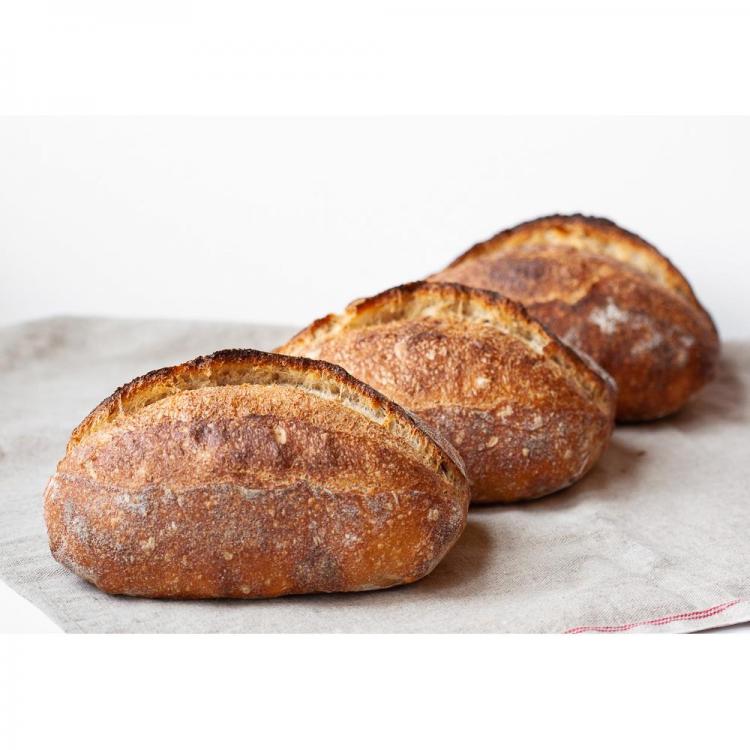
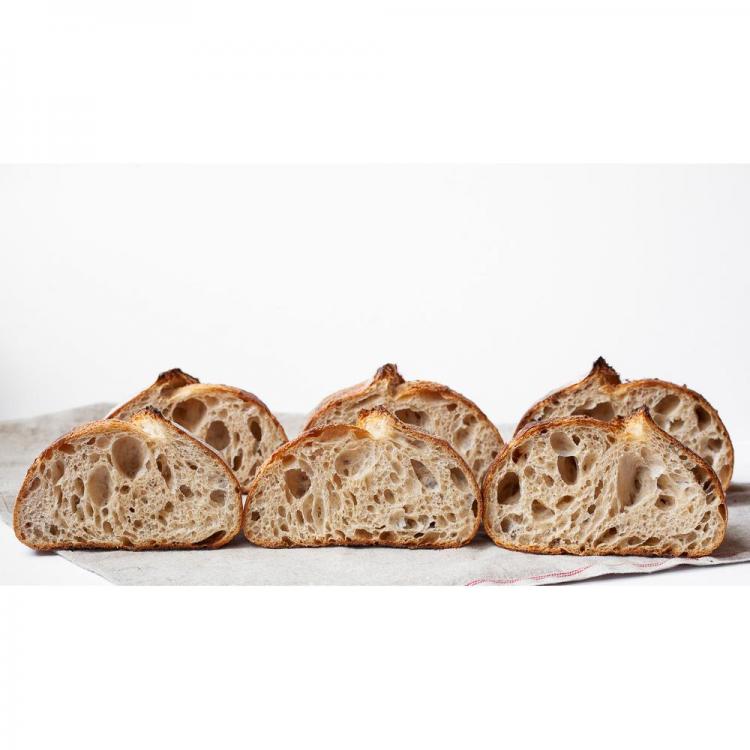

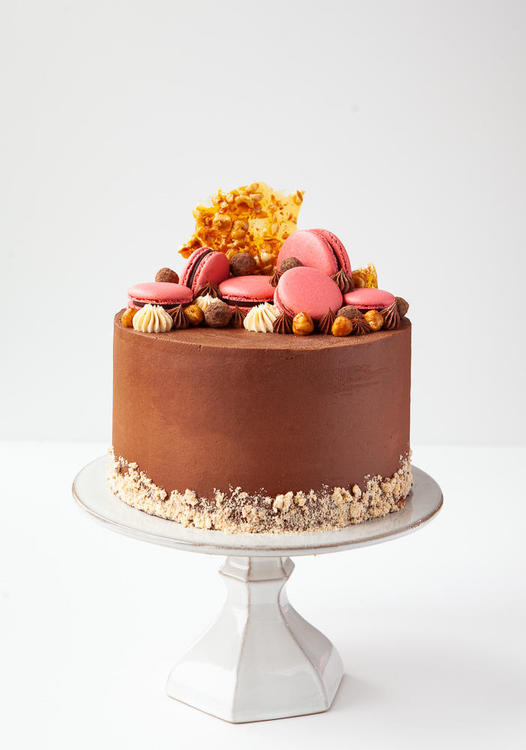
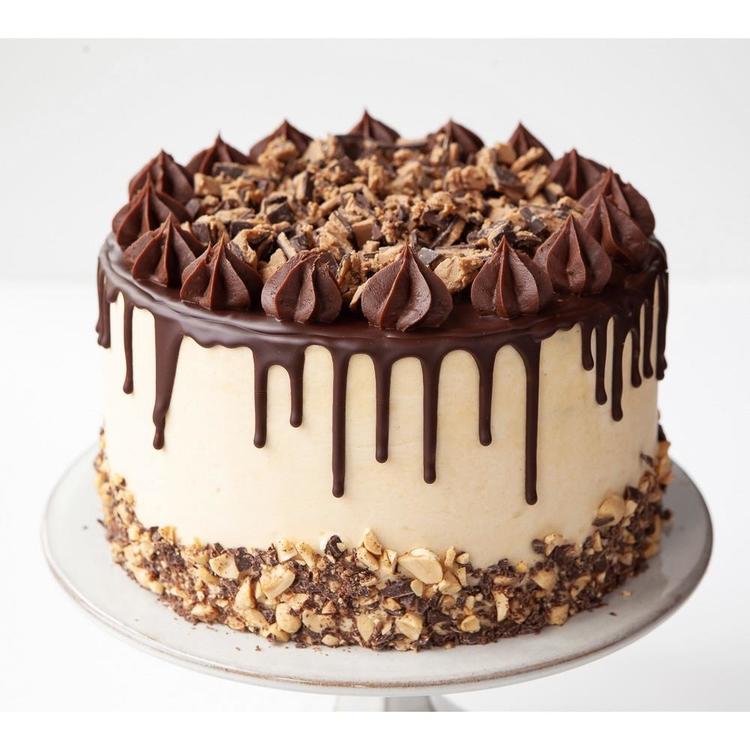


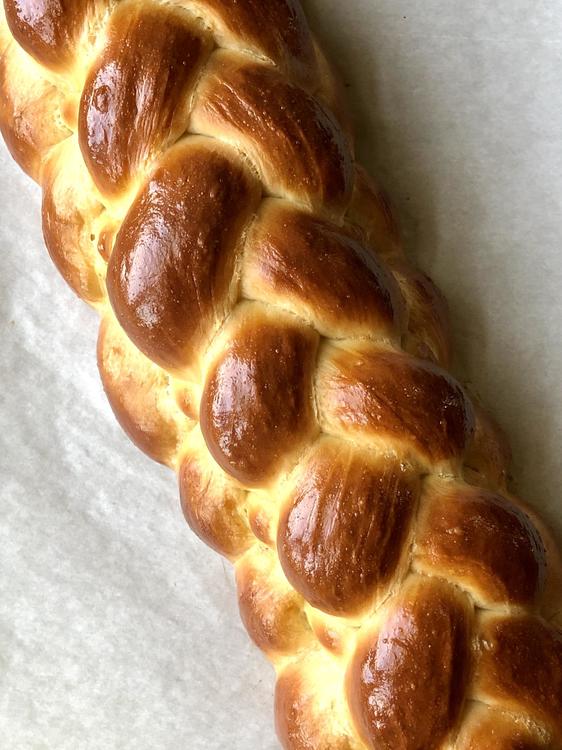
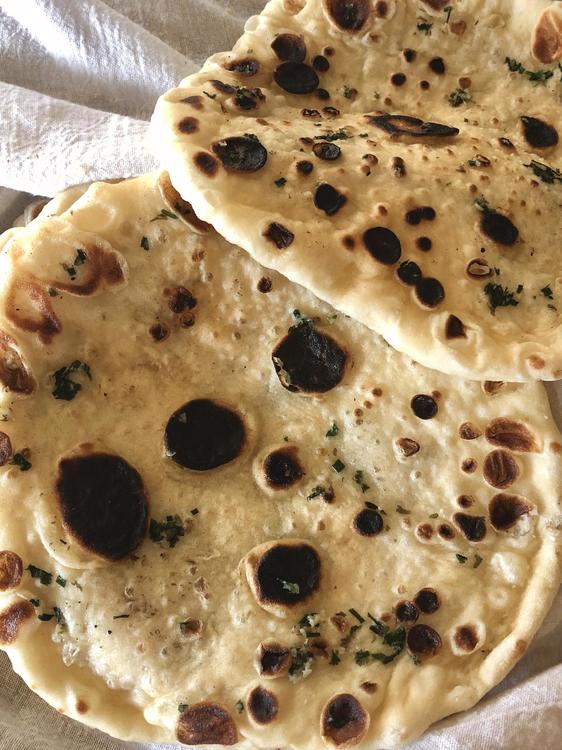


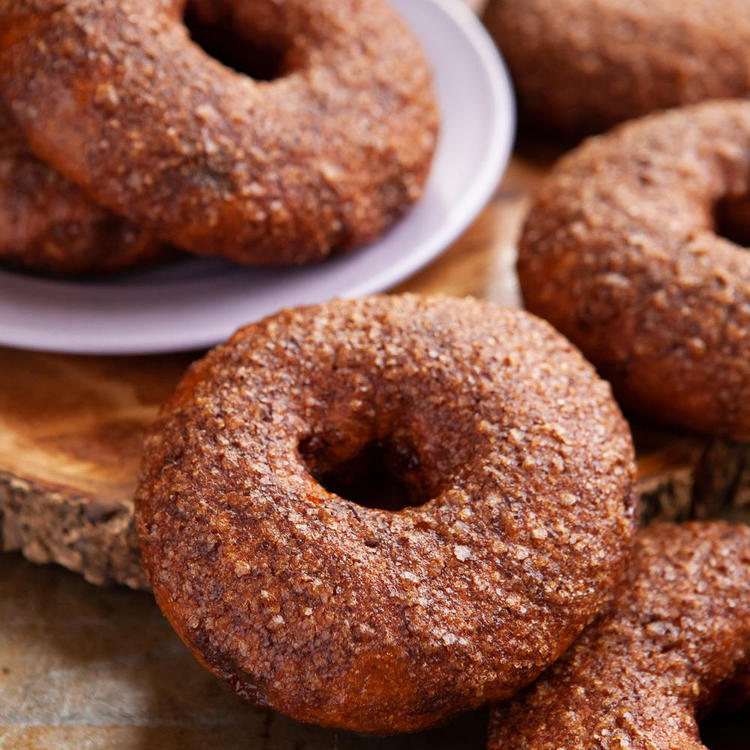


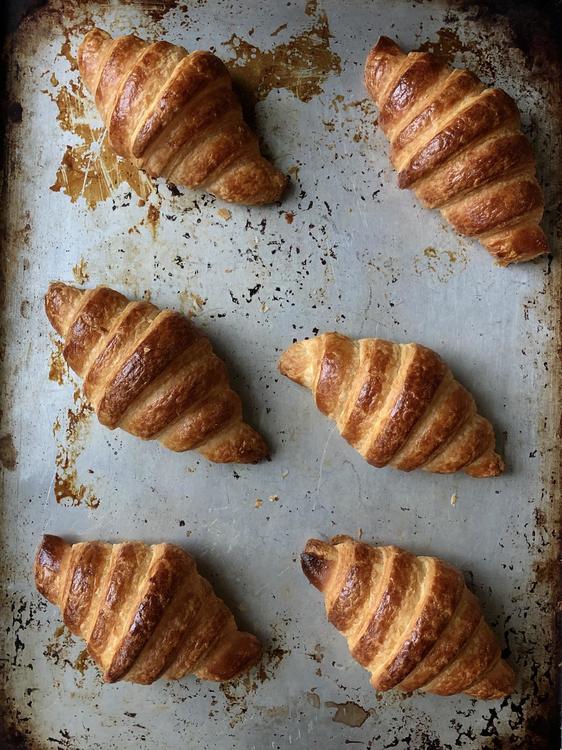
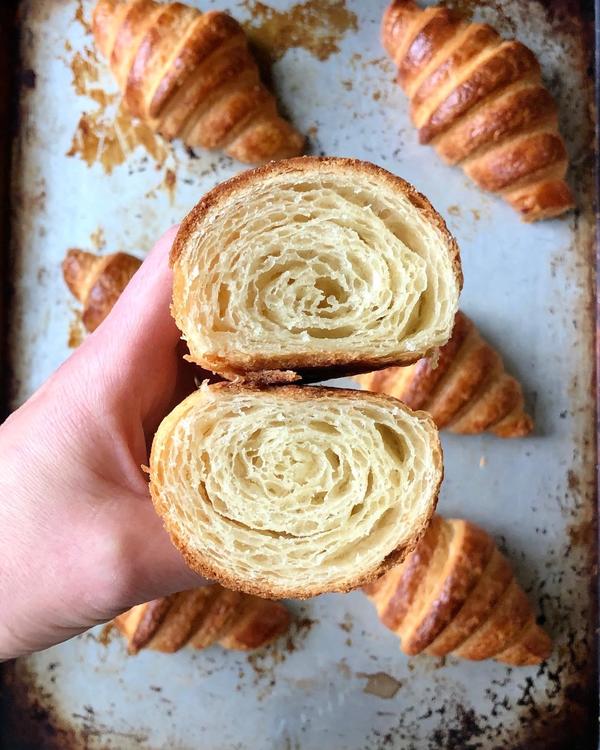

Help needed: Chocolate frosting with cocoa powder
in Pastry & Baking
Posted
The Hershey’s recipe, which is all cocoa powder with no chocolate, is 2/3 cup for 1 stick of butter. It’s pretty good. For that style of frosting.